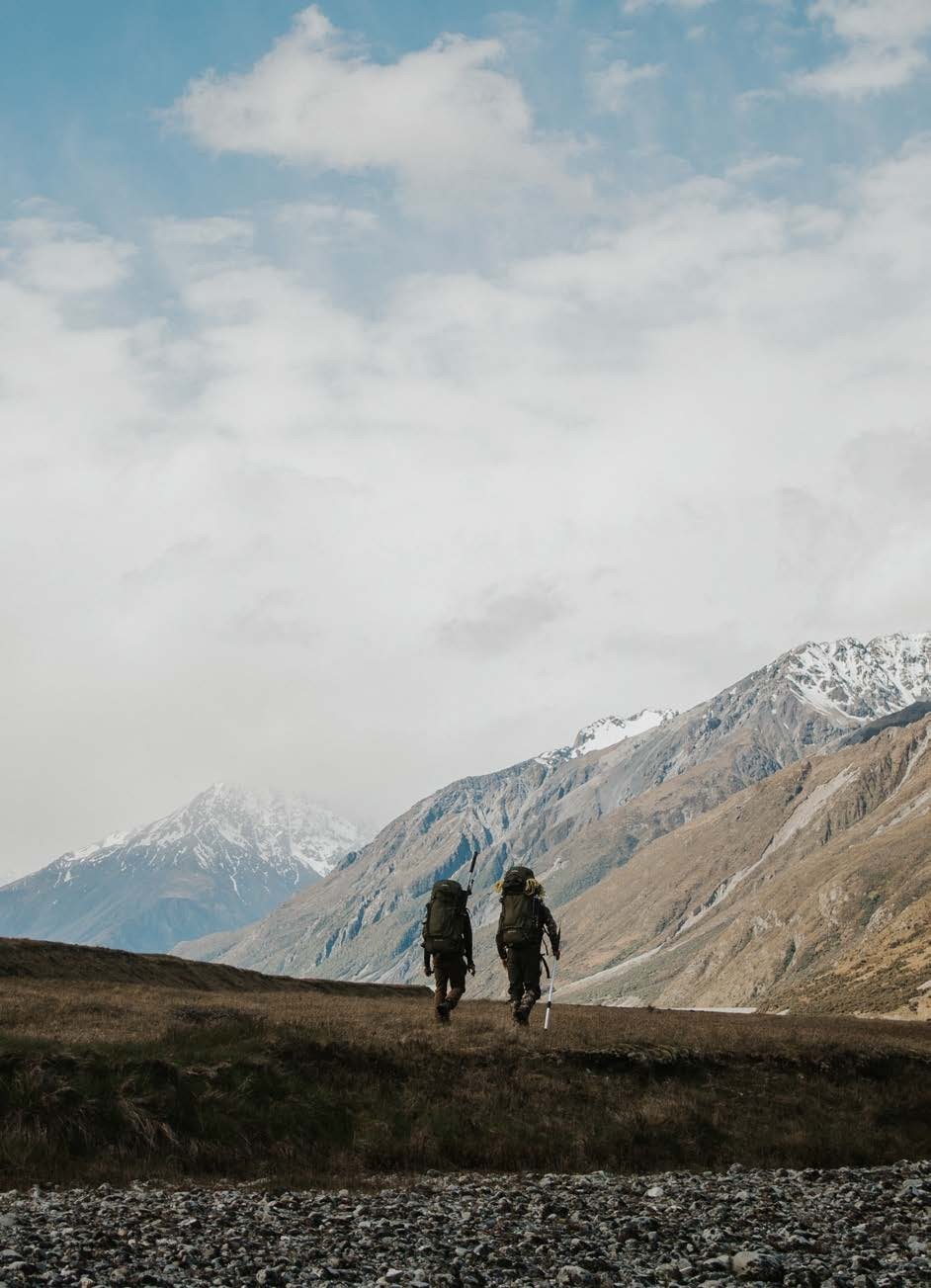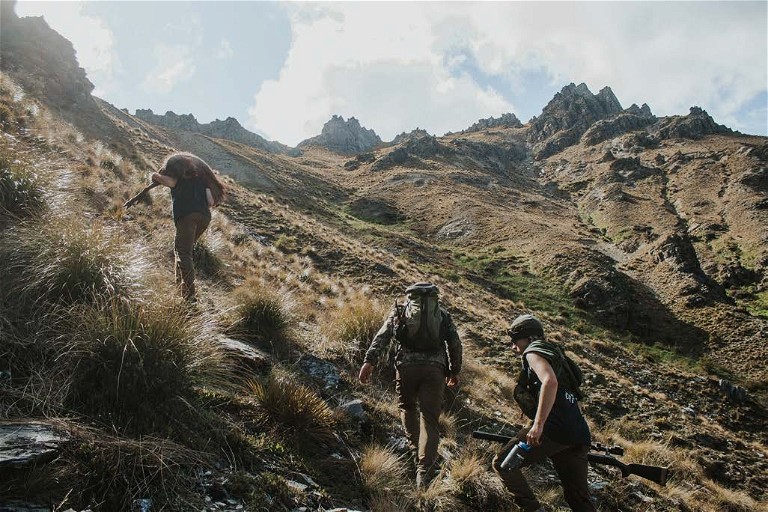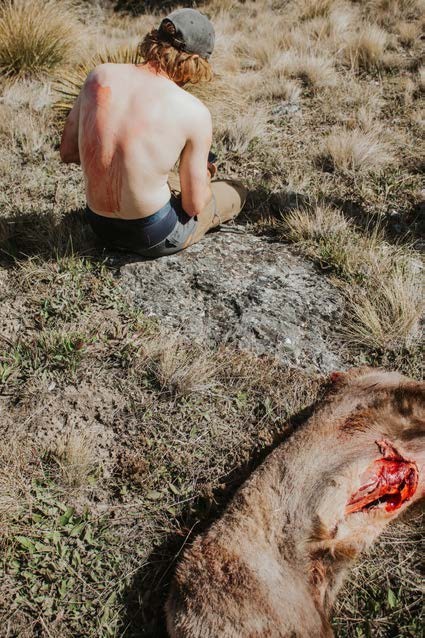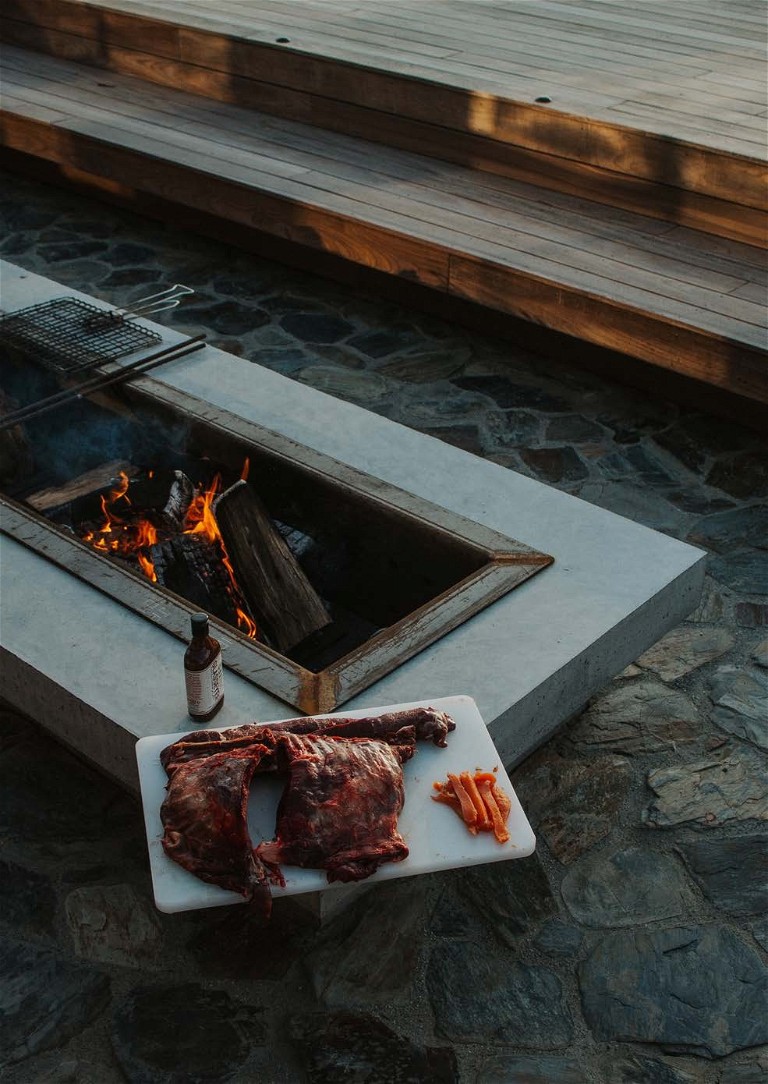RAFTS, BULLS & BACKING OUT
Words by Gabe Ross, Images by Thomas Greenaway
The arrival of spring every year prompts a rather bipolar move from New Zealand's Himalayan tahı. These crazy animals move from the high, ragged peaks and bluffs of the Southern Alps to the lower tussock land and thick monkey scrub. As well as this they also merge into groups of male and female animals.
For hunters, this move and decision to group together makes these animals a he of a ot easier to target e don’t have to venture into country that gets you questioning your sanity and we can assess multiple animals at once to determine whether there is one in there we want to shoot.
In early November, Raz, Thomo and I chose to head into South Canterbury in search of a quality bull tahr. For this mission we decided to use a pack-raft in order to save a fair few hours walking up a bouldery river bed. However, upon arrival to our first river crossing it appeared we had come under gunned. The river was up a fair bit and we had one measly paddleboard paddle to propel us across to the other side. After a few attempts and some consultation from white water expert Raz, we found a technique that had us across somewhat comfortably but certainly not dry.
Time was getting on and we were keen to set up a tent and get out hunting as we only had a couple nights in here.

“ Right on cue as Raz and Thomo finished the tent set-up, I found three bulls that dwarfed our previous findings. ”
After a 40-minute speed walk, we'd spotted 30 or so nannies and young bulls and found base camp for the night. I managed to skive off my tent assembly job and promptly put my bincs and spotting scope to use. Right on cue as Raz and Thomo finished the tent set- up, I found three bulls that dwarfed our previous findings.
I managed to skive off my tent assembly job and promptly put my binos and spotting scope to use. Right on cue as Raz and Thomo finished the tent setup, I found three bulls that dwarfed our previous findings.
Within five minutes we had our dry clothes on and kit for the evening ready. We were off on another speed walk up the river as the race against fading daylight was pretty neck and neck. Once at an assembly range, all three of us looked over this small mob and confirmed that there was one in there that was worthy of a bullet.
There seemed to be a relatively clear path to get within shooting range and to our surprise the sun was still up. We began our approach. Within the first 50 metres of our climb up toward these animals, a large mob of juveniles popped up and began making a fuss, whistling and hurriedly making their way in the opposite direction – pretty much straight toward the three animals we were targeting. We worried this would spook the bulls we were after and, unfortunately, we were correct. One day down with no luck.
The next morning was pretty uneventful on the tahr front with a few nannies and young bulls spotted but nothing that required further investigation. As the morning drew on a couple of Canada geese made themselves present bloody close to our campsite. Knowing that they are quite the pest and hearing rumours that they aren’t ad chewing, we decided to ta e one. One pill from the 7mm Rem Mag at 100 yards swiftly ended one of these irds’ i es or nch we had soe its and bobs, but everyone was keen to try this goose. The only cooking surface we had available was a thin rock and the only thing we had remotely close to seasoning was so sa ce t’s fair to sa our attempt on the first breast was a nogo. However, a bit more time on the hot rock and a more willing attitude meant the second breast offered more reason to keep shooting these things.
The rest of the arvo was spent traveling down the riverbed to the next hunting zone. We bumped into a group of hunters early on and made our plans c ear as to ee o t of each other’s way. I was fortunate enough to draw the pack-raft card and got to float down the river with our kit whilst Raz and Thomo navigated a gnarly bluff section over a few hours.
The afternoon was now drawing to a close so we began to look for a campsite. To our surprise we stumbled across a set-up tent right where we were intending to hunt.
Ahh well , we’ll move on and find a zone further down the river,” was the call.
Another few kilometres downstream and we ran into yet another group of hunters. Now this was going to be a bit of an issue. Luckily, we were able to have a yarn with a couple of these hunters and both communicate a clear plan. The reality was that we were last in here, the public land was bordered by private property restricting us to a smaller area, and there was no way of us getting back up the river. As such there was really only one option – we had to head back to the car. Another tough river crossing in the raft and a couple hours on foot had us back at the car before dark.
It is what it is et’s go find something tomorrow.”
We made the long drive back to Hawea and discussed our plan of attack for the following day. It was now chamois that we were going to target and an early morning up on the tops


“ The call was made to carry the whole animal out so we could have a big cook-up that night. ”
The call was made to carry the whole animal out so we could have a big cook-up that night. The carry-out was brutal but we would find out later that it would be well worth the effort. That afternoon we were joined by our mate Bill. Bill is a taxidermist and as such has a particular skill for butchery. For that night’s feed, we were excited to see how creative we could get with the ribs, loins and back steaks. There really is no better way to finish off an epic adventure than sitting around a fire telling stories and chowing down on the result of all the hard work from the days prior. On a final note, have a go at chamois ribs – they are bloody tasty!
